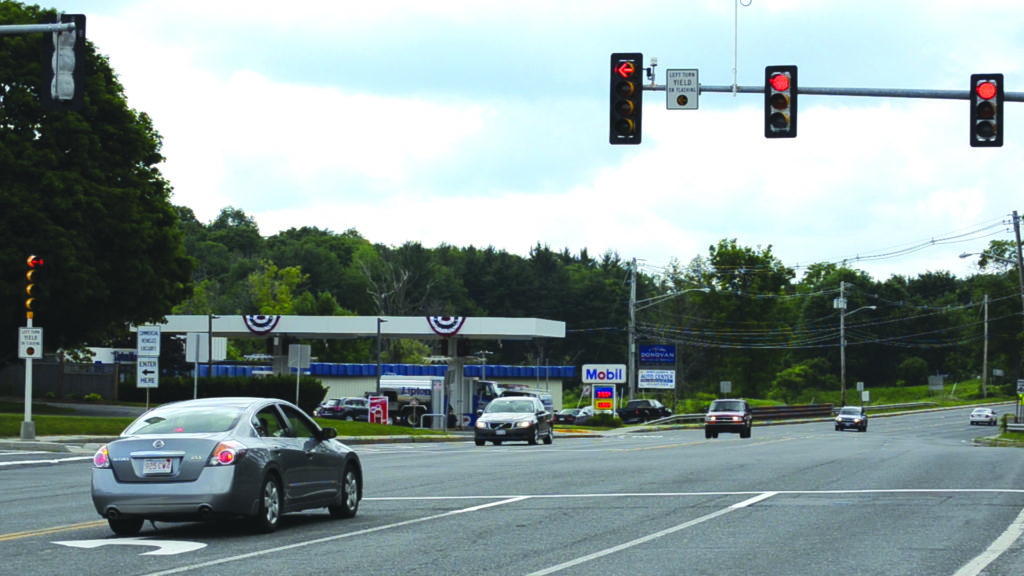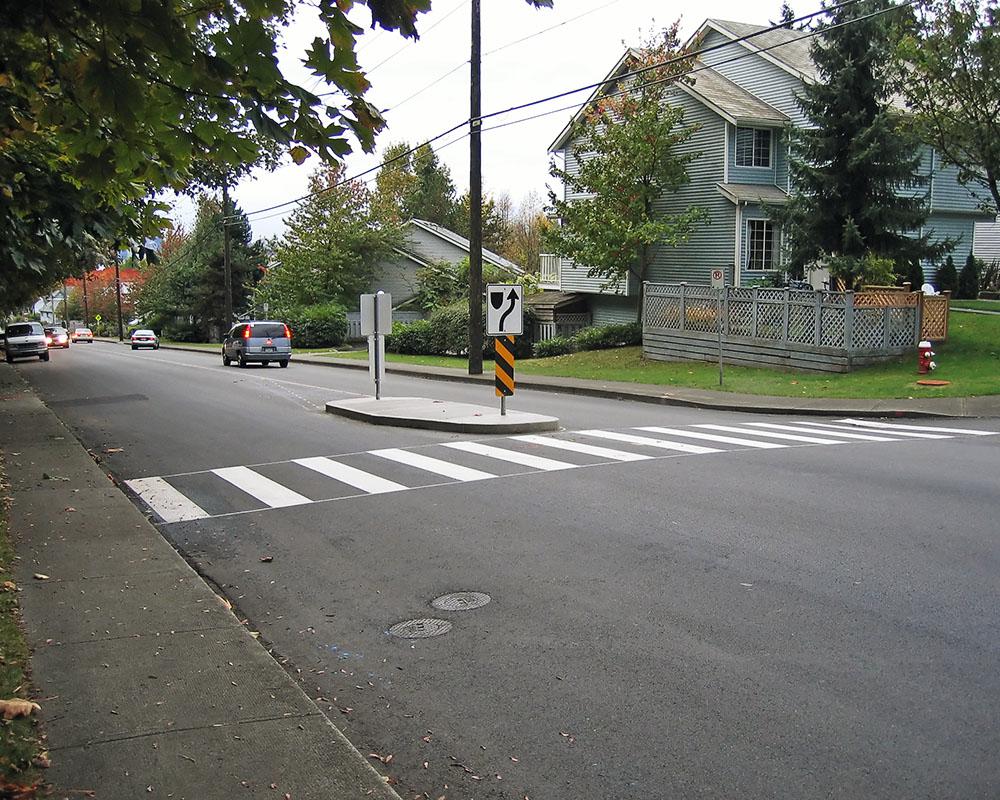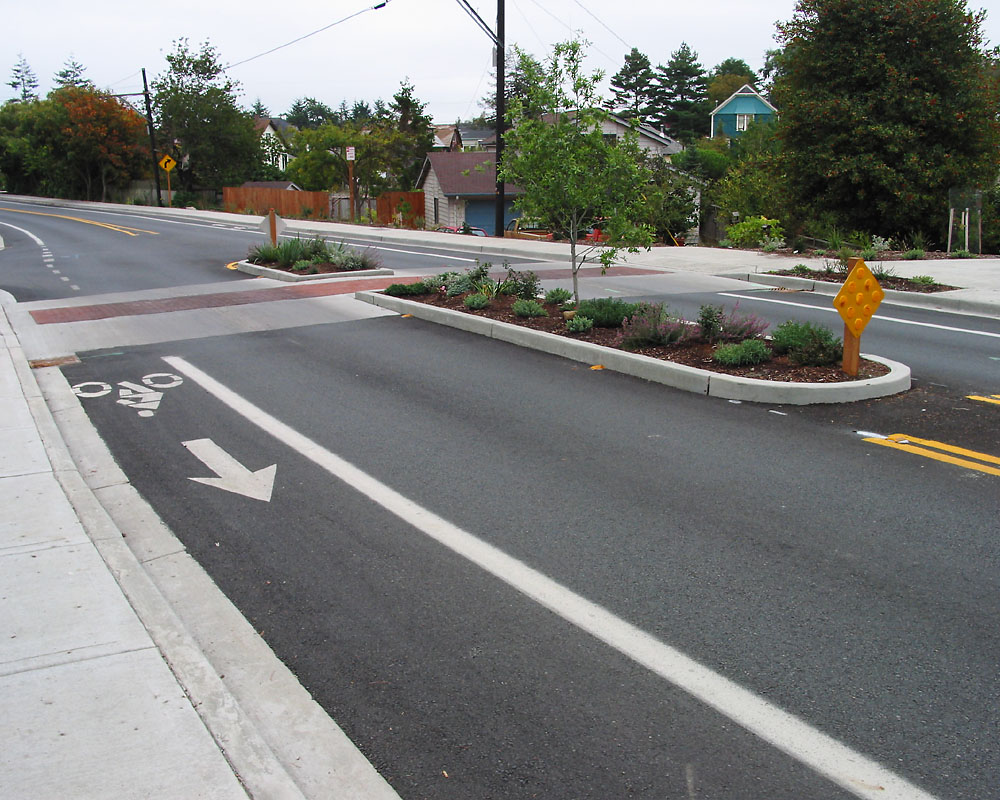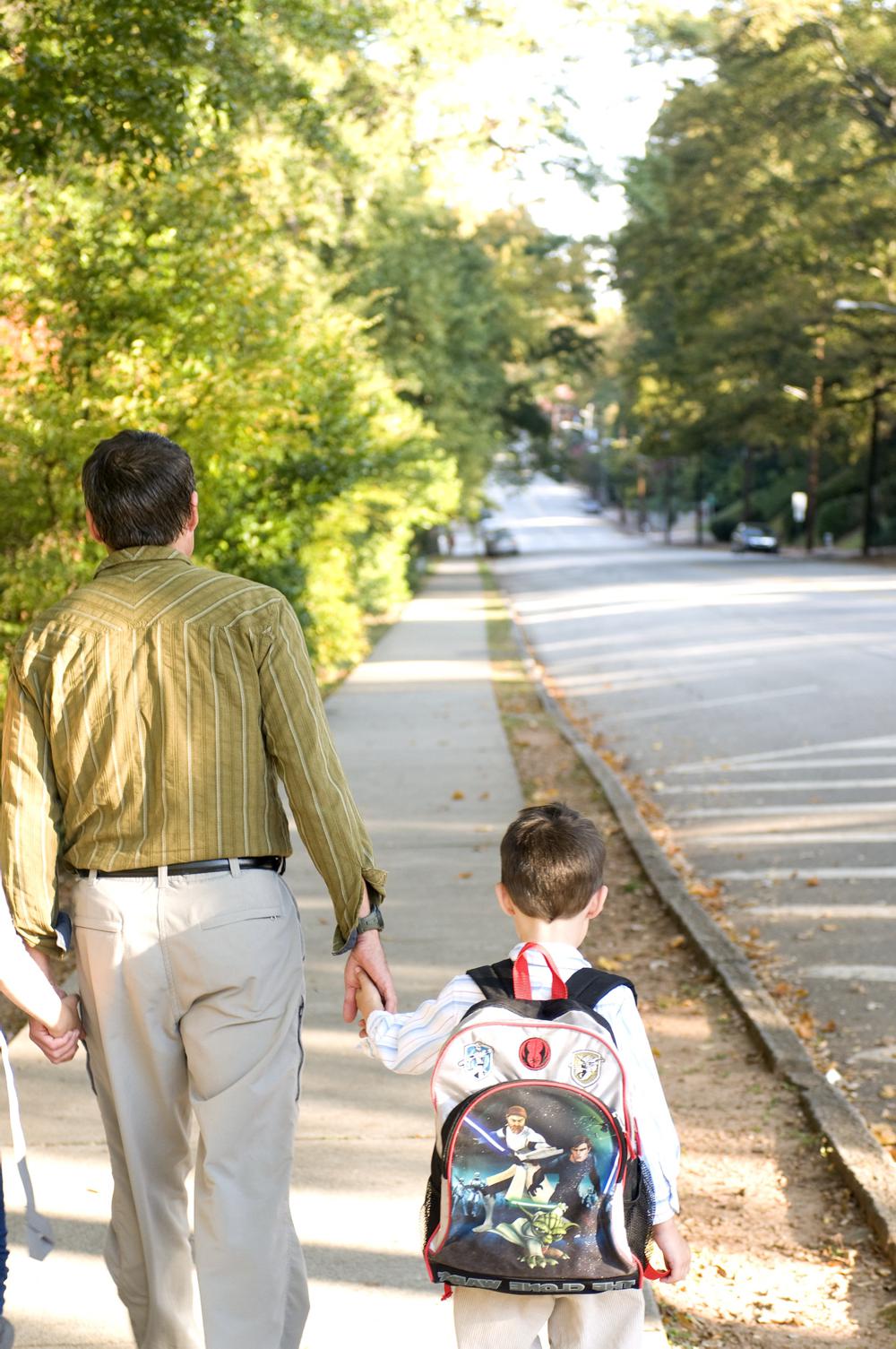| Code |
Attribute |
Definition |
Example |
| 1 |
Marked Crosswalk at Intersection |
A distinctly indicated feature for pedestrian crossing by lines or other markings on the surface within the contiguous lateral curb or boundary lines of the intersection, a crossing or connecting of two or more roadways. |
 |
| 2 |
At Intersection but no Crosswalk |
Within the contiguos lateral curb or boundary lines stemming from an intersection of two or more roadways crossing or connecting, and does not contain lines or other markings to indicate pedestrian crossing. |
 |
| 3 |
Non-Intersection Crosswalk |
A distinctly indicated pedestrian crossing by lines or other markings on the roadway surface but not within operational distance of any multi-road intersection. |
 |
| 4 |
In Roadway |
In roadway, indicates the presence of a vulnerable user in the trafficway ordinarily used for motor vehicle travel. Includes situations such as a child playing, a mechanic working on a motor vehicle, as well as multi-modal use including walking & cycling. |
 |
| 5 |
Not in Roadway |
This attribute should be used for a vulnerable user that was struck while outside the trafficway boundaries. For example a person in a building/house, in their front yard or private driveway, or a person in a parking lot stall or aisle. |
 |
| 6 |
Median (But not on Shoulder) |
An area of trafficway between parallel roads separating travel in opposite directions. A median should be four or more feet wide. A median can be depressed, raised, or flush with the travel way surface. A median if flush or painted without a barrier must be four or more feet wide. |
 |
| 7 |
Island |
A cement or grassy area in the middle of a trafficway. |
 |
| 8 |
Shoulder |
Presence of a non-motorist on the part of a trafficway which is contiguous with the roadway for emergency use, accommodation of stopped motor vehicles, and lateral support of the roadway structure. Includes situations such as vehicle occupants outside of their vehicles temporarily or maintenance/emergency personnel on location for unrelated events. |
 |
| 9 |
Sidewalk |
Any improved surface primarily constructed for use by pedestrians. Do not select this attribute for sidewalks within a ‘driveway’, ‘median (but not on shoulder)’, ‘island’ or ‘not in roadway’. |
 |
| 10 |
Shared-Use Paths or trails |
A trafficway specifically separated and designated as being open for travel by pedalcycle, as well as other vulnerable users. |
 |
| 11 |
On-Street Bike Lanes |
Used for any portion of the roadway designated by striping, signage, or pavement markings for preferential or exclusive use by bicyclists. These lanes are typically adjacent to the travel lane and are part of the street infrastructure. |
 |
| 12 |
On-Street Buffered Bike Lanes |
Used when the vulnerable user was located in a lane for bicyclists that is located within or directly adjacent to the roadway and not physically separated from motor vehicle traffic. |
 |
| 13 |
Separated Bike Lanes |
Used to when the vulnerable user was located in an exclusive lane for cyclists that is located within or directly adjacent to the roadway and that is physically separated from motor vehicle traffic with a vertical element (e.g., raised curbs or medians, bollards, landscaping, or planters). Separated bike lanes are differentiated from standard and buffered bike lanes (see In Painted Cycle Lane) by the vertical element. They are differentiated from Shared-Use Path or Trail by their more proximate relationship to the adjacent roadway and the fact that they are bike-only facilities. Physically separated bike lanes are also sometimes called “cycle tracks” or “protected bike lanes.” |
 |
| 14 |
Raised Crosswalk |
Used for any marked pedestrian crossing that is elevated above the level of the adjacent roadway, typically to sidewalk height, and designed to calm traffic and enhance pedestrian visibility. |
 |
| 99 |
Unknown |
Indicates that the vulnerable user’s location was not known at the time of the crash. If this attribute is used, explanation in the narrative is recommended. |
|












